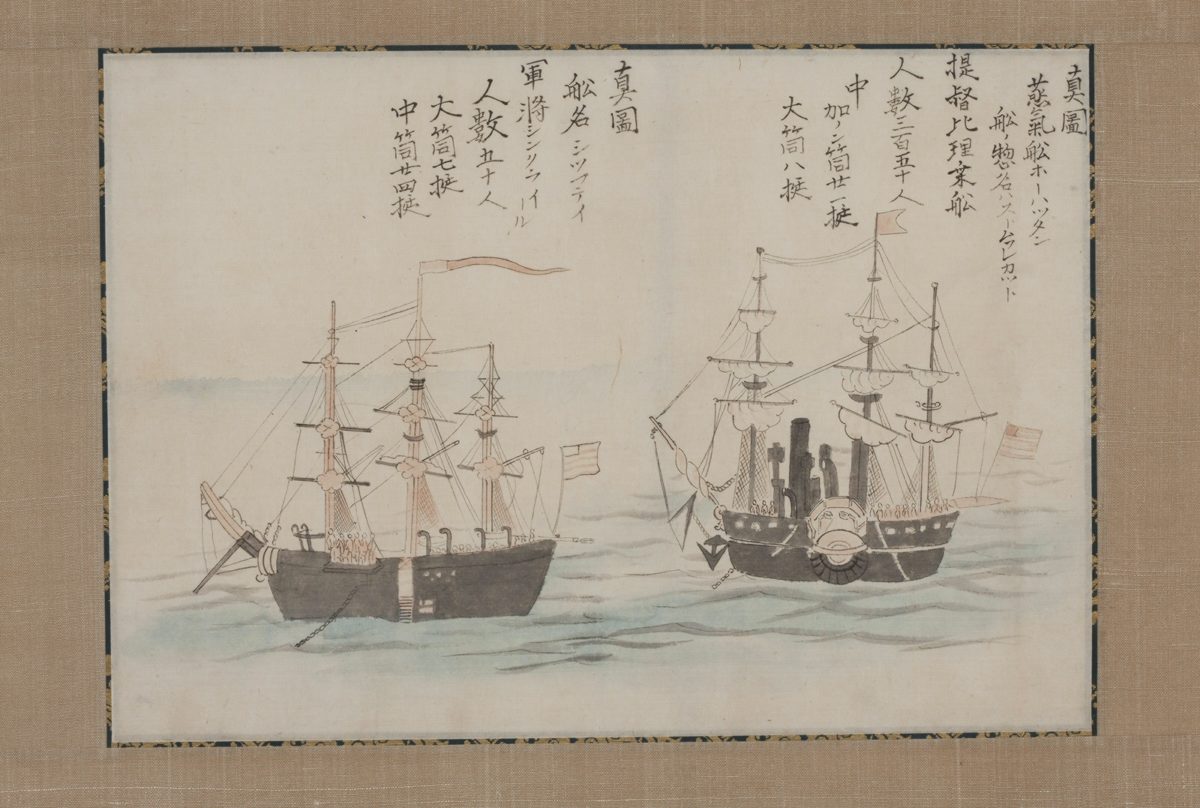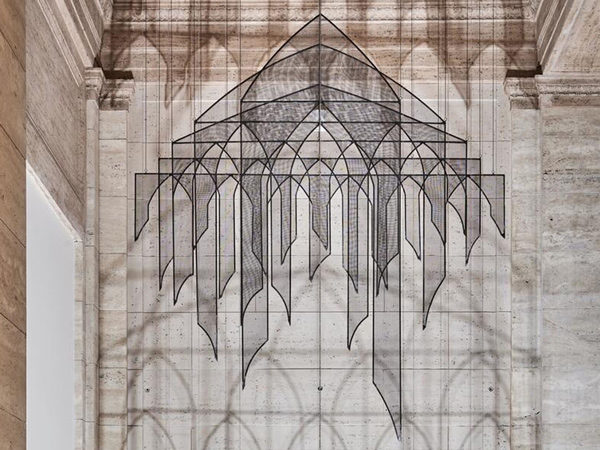Activity
A True Picture of the Steamship Powhatan, approx. 1854

A True Picture of the Steamship Powhatan.
This segment of the Black Ship Scroll depicts two of the nine American ships that arrived in Japan under Commodore Matthew Perry in 1854: U.S.S. Powhatan on the right and the U.S.S. Supply on the left.
The Powhatan, which was Perry’s flagship on his second entry into Japanese waters in 1854, was a side-paddle steam frigate that was among the largest and the last U.S. Navy vessels of its day. The inscription above the Powhatan illustration reads: “A true picture of the steamship Powhatan; a [type of] ship generally called a steam frigate. The ship upon which fleet commander Perry rode. Crew of 350 people. 21 medium cannons. 8 large cannons.”
The U.S.S. Powhatan served a long, prominent career. In July 1858 Townsend Harris, the first American consul to Japan, successfully signed the second United States-Japan treaty (the Harris Treaty, or Treaty of Amity and Commerce); as in the signing of the Kanagawa Treaty, this took place on board the Powhatan. When the shogunate decided to send an embassy with the ratified Harris Treaty to the United States in 1860, once again the Powhatan was employed, this time to carry the Japanese ambassadors across the Pacific to Hawaii, San Francisco, and Panama. After leaving Japan it was used as a warship in the American Civil War, then served as the U.S. flagship in the South Pacific and the Caribbean until the late 1880s.
The Supply, a ship-rigged sailing vessel that was a stores ship for Perry’s expedition arrived in Japan in 1854, but later than the other eight ships in the squadron. The inscription tells us that it held “50 men, 7 large cannons, and 24 medium cannons.”







